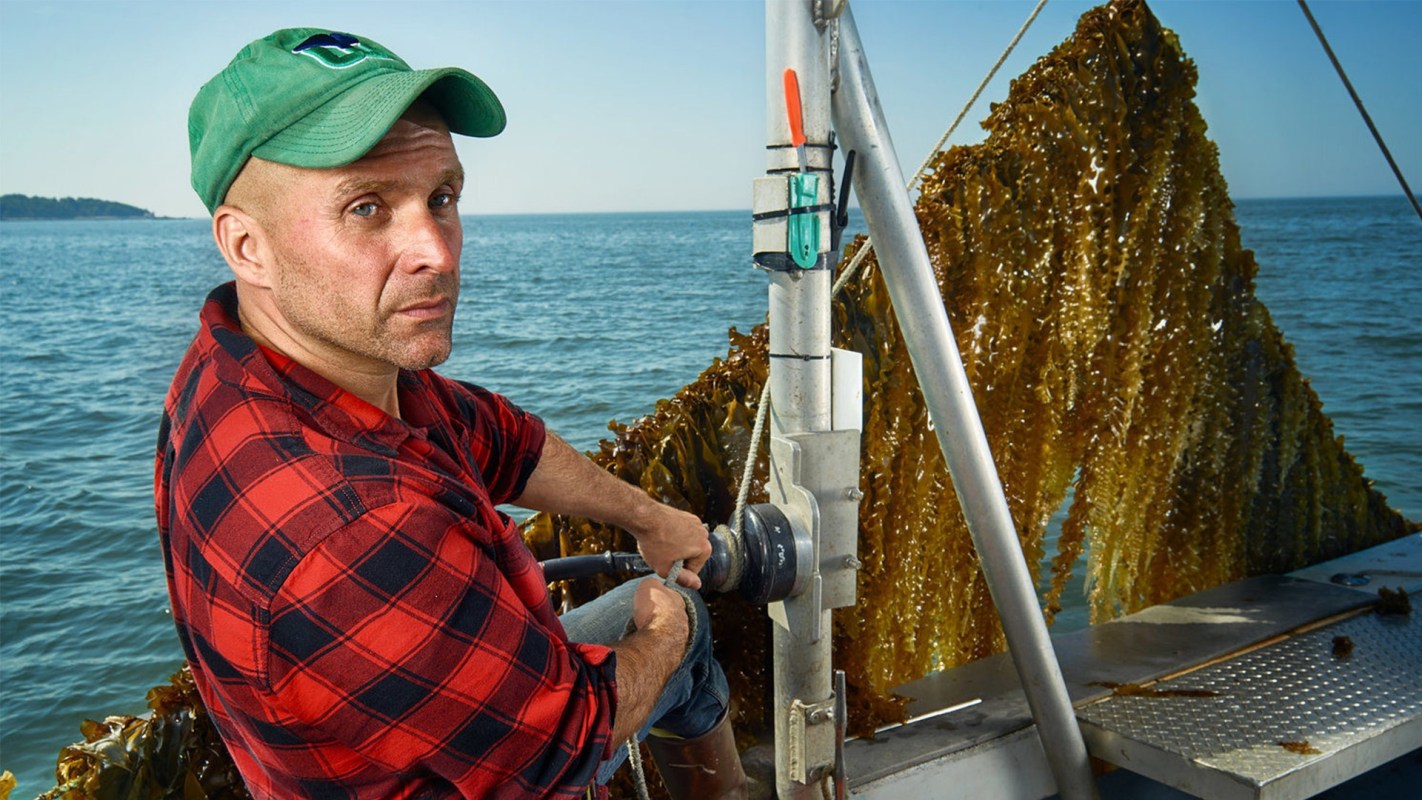Bren Smith knew it was time for a career change when hurricanes obliterated his oyster farm two years in a row.
In 2011 and 2012, two of the U.S.'s most destructive storms in recent memory, Hurricane Sandy and Hurricane Irene, revealed how warming temperatures could continue to increase the scale of destructive weather events.
Smith had been a fisherman all his life. He dropped out of school at 14 to sail and work around the globe. But after Hurricane Irene smashed his second oyster farm in 2012, he decided to try something completely different: growing kelp.
The following year, he founded GreenWave, a non-profit aimed at teaching regenerative farming to a new generation of seaweed growers.
"Imagine an underwater garden," Smith told GBH News. "I grow kelp, which is a kind of seaweed, vertically downwards, and then next to that are mussels, in these sort of mussel socks that look like sausages, and then oysters, clams –— really finding those nutrient sweet spots up and down the water column to do polyculture. To do what Mother Nature does, which is grow reefs."
GreenWave advocates for a farming model that is relatively affordable to replicate. Smith himself started farming with little more than $20,000, a boat, and 20 acres of ocean.
Because Smith's method uses the whole water column, his farms operate like vertical farms that stretch, by rope, from the water surface to the ocean bed. The sea, Smith told The Beam, can still operate like "the commons", where people are able to boat and fish in the area since it is not privatized land.
Regenerative ocean farming is also a boon for the environment. Kelp absorbs carbon as it grows, making it the aquatic equivalent of tree planting. Kelp also provides a habitat for small organisms, like prawns, snails, and brittle stars, so it plays a central role in "artificial reefs" that help to heal oceans' underwater ecology.
The oysters and mussels that Smith grows alongside the kelp then filter and clean the water. Oysters sequester nitrogen, one of the worst pollutants in our oceans today and a major cause of toxic algae blooms.
Growing a polyculture farm in this way means that, unlike larger industrial farms, GreenWave's model does not use any pesticides or antibiotics.
To date, GreenWave has trained more than 900 ocean farmers and hatchery technicians.
Smith published his first book, Eat Like a Fish: My Adventures as a Fisherman Turned Restorative Ocean Farmer, in 2019. It's a climate memoir that documents his transition to sustainable ocean farming.
For Smith, who once witnessed 30,000 lose their jobs in Newfoundland after the cod stocks in the area collapsed, the most important part of sustainability is ensuring meaningful work and financial stability for the workers most affected.
"It's a jobs issue. There are going to be no jobs on a dead planet. No ocean," he told The Mother Earth Podcast.
Join our free newsletter for cool news and cool tips that make it easy to help yourself while helping the planet.









